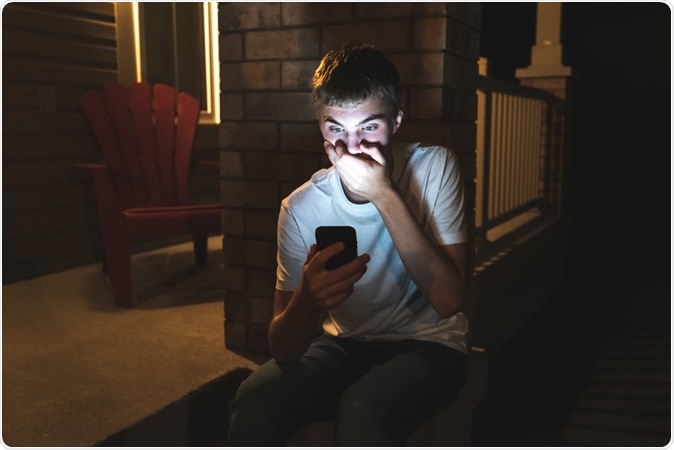Sending or receiving sexually explicit or sexually suggestive images and videos, via mobile phones, or “sexting” isn’t an as widespread occurrence as previously thought, but the number of teens engaging in the activity hasn’t lessened despite preventive efforts, a new study found.
A team of researchers at the University of Wisconsin-Eau Claire and Florida Atlantic University wants to know the extent of “sexting” activities among middle and high school students. The effort to investigate this is because only scant knowledge is known on the current prevalence rates for receiving and sending sexually explicit videos or images.

Image Credit: Mooremedia / Shutterstock
Little knowledge of current “sexting” rates
Though many national studies have contributed to the body of knowledge on sexting activities and behavior among teens, the prevalence projections were dated before 2011. Hence, only little is known of the current rates on the national level, since the last estimate was eight years ago.
Published in the journal Archives of Sexual Behavior, the study involved middle and high school students between the ages of 12 and 17 years old. The researchers only focused on sexually-explicit images and videos, not including messages. In total, they surveyed 5,593 American students.
Majority of teens not into “sexting”
The researchers found that most of the respondents were not engaging in sexting. In fact, only 14 percent of the respondents admitted receiving a sexually-suggestive image from a partner, a girlfriend or a boyfriend. On the other hand, only 13.6 percent stated they received an image or video from another person, whom they do not have a romantic relationship with. Also, approximately 11 percent of the students said they send images and videos to a girlfriend or a boyfriend.
“Rates of asking for, being asked for, and sharing of sexts are also presented and are broken down further by gender, sexual orientation, race, and age. Implications for preventing sexting behaviors with these results in mind are also discussed,” the researchers said in the study.
Remarkably, a majority of the respondents who were asked by a romantic partner to send a “sext” obeyed. However, for those who were asked by someone else to send a sexually-explicit video or image, only 43 percent submitted.
Furthermore, male respondents were more likely to send or receive a “sext” from a current girlfriend or romantic partner, but, both men and women were equally at risk of receiving “sext” messages from someone else, whom they do not have a romantic relationship with.
Females, on the other hand, were at an increased risk of being asked to send “sext” messages to someone else, whom they don’t have a romantic relationship with. Of these female students, only 34.1 percent obeyed or complied.
Sexting rates still not going down
However, the study also found that regardless of many students do not engage in sexting, the rate is still not decreasing, despite preventive efforts of educators across the country.
“Despite widespread public concern about these behaviors as they occur among adolescents, including potentially serious legal consequences, relatively little research has been done to estimate the frequency of sexting among middle and high school students,” the researchers mentioned in the study.
An estimated one-third of the respondents who sent or received explicit messages only did it once. But, commonly, students performed sexting a few times. Less than 2 percent of all respondents did sexting many times and 2.6 percent said they received the messages many times.
In a nutshell, approximately 4 percent of students admitted they shared the sexual image sent to them with another person, even without permission. The same number of students believed that an image of them has been shared to others without their permission. Hence, these activities among teens may lead to further problems, including “sextortion”.
“Findings from our study provide a very important message for youth who may believe media headlines that suggest sexting is more widespread than it actually is,” Dr. Sameer Hinduja, a professor in the School of Criminology and Criminal Justice in FAU's College for Design and Social Inquiry, said in a statement.
“Showing adolescents clear evidence that a relatively small proportion of teens engage in sexting could actually result in decreased overall participation since it underscores that it is not as normal, commonplace, or widespread as they might believe,” she added.
The study on current incidence rates of sexting could strengthen efforts to prevent the activity, especially among adolescents and teens in the country.
Journal reference:
The Nature and Extent of Sexting Among a National Sample of Middle and High School Students in the U.S., Patchin, J.W. & Hinduja, S. Arch Sex Behav (2019). https://doi.org/10.1007/s10508-019-1449-y, https://link.springer.com/article/10.1007/s10508-019-1449-y